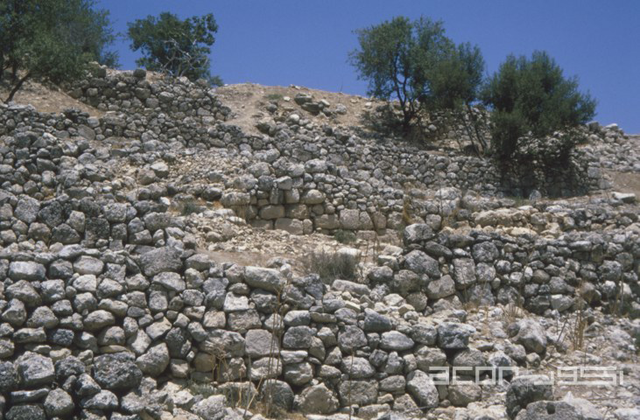You are here
Scholar traces human occupation in Jordan Valley to 1.4 million years ago
By Saeb Rawashdeh - Jan 28,2023 - Last updated at Jan 29,2023

Tell al-Sultan in Jericho is an archaeological site with remains dating back to 10,000 BC (Photo courtesy of Robert Hoetink)
AMMAN — With an area of 104km in length and ranging from five to 20km in width, the Jordan Valley has hosted human occupants from the Lower Palaeolithic (about 1.4 million years ago) to the present day, noted Jordanian Professor Emeritus Zeidan Kafafi.
“Hunter and gatherer camps have been discovered at sites such as Ein Gev I and II, Ain Mallaha, Wadi Hammeh, Fazael and Jericho. Around 11,000 years ago, the inhabitants of Jericho started to cultivate plants, one of the key initial components of the process of neolithisation in the Jordan Valley,” said Kafafi, adding that large curvilinear houses that were dug below the ground’s surface have been recovered in sites like Jericho.
These settlements were located either on alluvial soils, or in very close proximity to them, and the inhabitants of the Jordan Valley seemed to have left the broad spectrum hunting-and-gathering way of life and deliberately chose the kind of land they wanted to live in, Kafafi said.
“The careful location of settlements allowed the inhabitants to experiment with cultivating legumes and cereals, and in particular barley,” Kafafi said, adding that meat consumed at sites like Jericho and Netiv Hagdud was still procured by hunting, and gazelle was the preferred source of meat.
Other commonly hunted animals were fox, deer, boar and waterfowl, the professor said, adding that this Pre-Pottery Neolithic (PPNA) period witnessed the establishment of villages in the southern Levant.
“Moreover, these villages were followed by the more substantial, in architecture and size, villages of the Pre-Pottery Neolithic B [PPNB], commencing at about 10,500 years ago. The builders of the new villages were initially considered by many scholars to be new people coming into the region,” Kafafi said.
Furthermore, the culture of the PPNB period differs from that of the earlier PPNA period, as the cultivated cereals became domesticated and people began to depend more heavily on domesticated animals to supplement their earlier mixed agrarian and hunter-gatherer diet, Kafafi said, noting that this transition was a “smooth” process in Jordan.
“The PPNB in the Jordan Valley was traditionally believed to be followed by a long period of abandonment. Some scholars attributed this to climatic changes. Based on the excavations conducted at sites located on the west bank of the Jordan River such as Sheikh ‘Ali, Munhata and Jericho, a gap of occupation between c. 6500 and 5500 BC was observed,” Kafafi said, adding that this gap was followed by the new period known as the Pottery Neolithic.
However, some of the sites on the Jordanian plateau, like ‘Ain Ghazal, have an almost continuous occupation, he said.
“With the new technology of manufacturing pottery, new and more diverse Neolithic cultures have been identified on both banks of the Jordan River,” Kafafi stressed. Some scholars have suggested that the builders of the Pottery Neolithic villages were non-indigenous to the area and brought a new technology of pottery manufacturing with them, he added.
“These settlers might have come from the north, although the continuous settlements between 7000-6400BC suggest otherwise,” Kafafi concluded.
Related Articles
AMMAN — The Jordan Valley covers approximately 104 km in length and five to 20 km in width.
AMMAN — Located some 500 metres from the old Amman-Jerash road, Tell Abu Suwwan represents one of the Neolithic mega sites whose occupation
AMMAN — Evidence of human occupation in wadis from the Jordanian central massive goes back to the Palaeolithic period as it was evidenced in


















